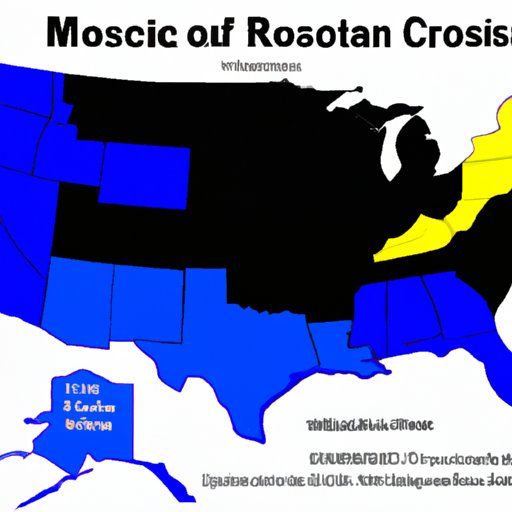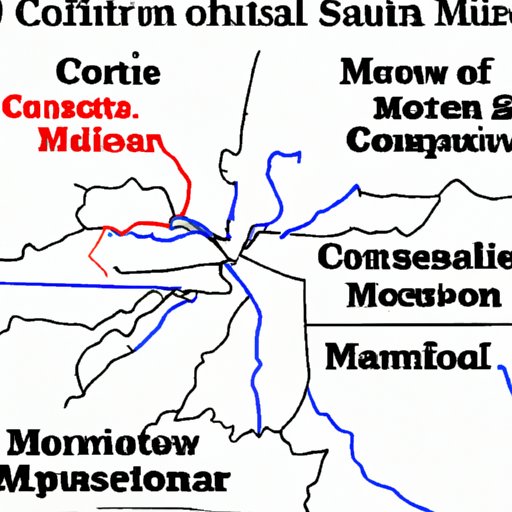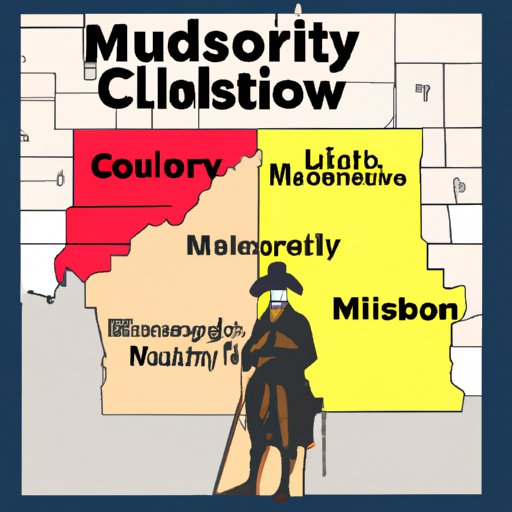Introduction
Sectionalism is a term used to describe the division of a country over regional issues or beliefs. In the early 19th century, the United States was divided into two sections: the North and the South. The North was mainly populated by anti-slavery advocates, while the South was a stronghold for the pro-slavery movement. These regional differences would come to a head with the passage of the Missouri Compromise in 1820.
The Missouri Compromise was an agreement between pro-slavery and anti-slavery forces in the US that allowed Missouri to enter the Union as a slave state, while simultaneously barring slavery from the rest of the Louisiana Purchase territory north of the 36°30′ parallel. This compromise was seen as a way to maintain the balance of power between the two sides, and it had far-reaching implications for the issue of slavery in America.
Examining the Causes and Consequences of the Missouri Compromise
The Missouri Compromise was the result of several years of debate and negotiation between pro-slavery and anti-slavery forces in the US. In 1819, Missouri applied to become a state, but Congress was deadlocked over the issue of whether or not Missouri should be admitted as a slave state. This led to a stalemate between the two sides that threatened to tear the nation apart.
In order to resolve this impasse, Senator Henry Clay proposed the Missouri Compromise. Under the terms of the compromise, Missouri was admitted as a slave state, but slavery was barred from the rest of the Louisiana Purchase territory north of the 36°30′ parallel. This effectively created a “line” between free states and slave states, and it was seen as a way to keep the peace between the two sides.
The consequences of the Missouri Compromise were far-reaching. It allowed for the admission of Missouri as a slave state, which appeased the pro-slavery forces in the US. At the same time, it also prevented the expansion of slavery into the northern territories, which pleased the anti-slavery forces. In addition, it established a precedent for the admission of new states, which helped to stabilize the Union.

The Impact of the Missouri Compromise on Slavery in America
The Missouri Compromise had a major impact on slavery in America. Prior to the passage of the compromise, slavery had been allowed in all of the territories acquired during the Louisiana Purchase. However, the passage of the Missouri Compromise put an end to this, and it established a “line” between free states and slave states.
This line had a major impact on the expansion of slavery in the US. Many of the newly acquired territories south of the 36°30′ line were now open to the possibility of slavery, which allowed the institution to expand further into the West. At the same time, the ban on slavery in the northern territories prevented the further spread of the institution in those areas.

Analyzing the Political Dynamics Behind the Missouri Compromise
The political dynamics behind the Missouri Compromise were complex and multifaceted. On one hand, there were the pro-slavery and anti-slavery factions in the US Congress. On the other hand, there was the role played by Senator Henry Clay in negotiating the compromise. Clay was a skilled diplomat, and he was able to craft a solution that satisfied both sides.
Clay’s role in the negotiations was critical, as he was able to bridge the gap between the two sides and bring about a peaceful resolution. His ability to negotiate a compromise that kept the Union intact was instrumental in averting a potential civil war. As such, he is often referred to as the “Great Compromiser”.
Exploring the Legal Basis for the Missouri Compromise
The legal basis for the Missouri Compromise was controversial and complex. On one hand, some argued that the agreement violated the Constitution, as it restricted the rights of citizens in some states while granting them in others. On the other hand, supporters of the compromise argued that it was a legitimate exercise of Congress’ power to regulate interstate commerce, and that it was necessary to maintain the balance of power between the two sides.
Ultimately, the Supreme Court ruled that the Missouri Compromise was constitutional, as it did not violate any specific provisions of the Constitution. However, the ruling did leave open the possibility that similar agreements could be struck in the future that would be deemed unconstitutional.

How the Missouri Compromise Led to the Civil War
The Missouri Compromise was a short-term solution to the problem of sectionalism in the US. However, it ultimately failed to address the underlying issue of slavery in the country. This failure would lead to the outbreak of the Civil War in 1861.
The divide between the North and the South over the issue of slavery had been growing since the passage of the Missouri Compromise. The issue of slavery had become increasingly contentious, and the election of Abraham Lincoln in 1860 only served to exacerbate the situation. The secession of the Southern states soon followed, and the Civil War ensued.
It can be argued that the Missouri Compromise contributed to the outbreak of the Civil War, as it failed to address the root cause of the conflict: the issue of slavery. By allowing the expansion of slavery into new territories and by attempting to maintain a delicate balance between the two sides, the compromise may have inadvertently fueled the fires of sectionalism and led to the eventual outbreak of the Civil War.
Conclusion
The Missouri Compromise was a landmark agreement between pro-slavery and anti-slavery forces in the US. It allowed Missouri to enter the Union as a slave state, while simultaneously barring slavery from the rest of the Louisiana Purchase territory north of the 36°30′ parallel. The consequences of the Missouri Compromise were far-reaching, as it impacted the expansion of slavery in the US and set the stage for the Civil War.
The Missouri Compromise demonstrated the complexity of the issue of slavery in the US, and it highlighted the need for a long-term solution. Unfortunately, such a solution was never found, and the Civil War eventually broke out in 1861. The Missouri Compromise may have delayed the inevitable, but it ultimately failed to address the root cause of the conflict.
(Note: Is this article not meeting your expectations? Do you have knowledge or insights to share? Unlock new opportunities and expand your reach by joining our authors team. Click Registration to join us and share your expertise with our readers.)
